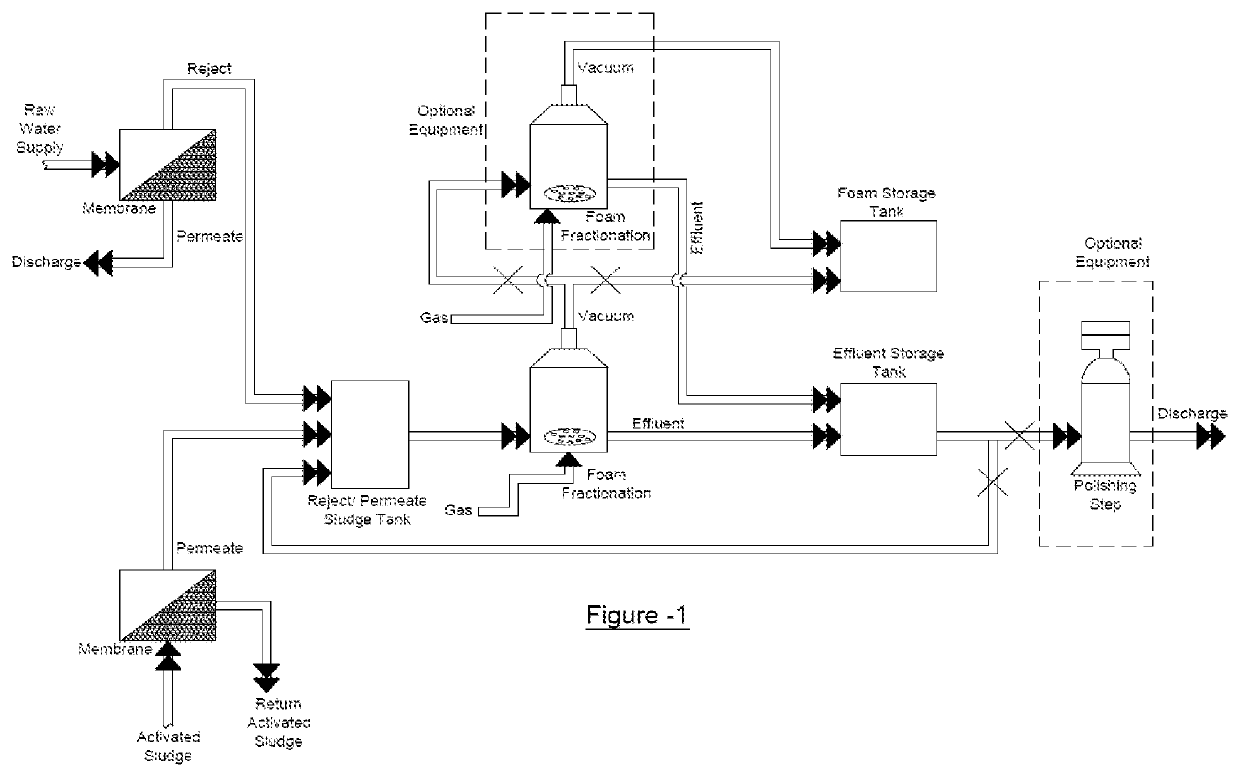Method to Remove and Concentrate PFAS from Water
a technology of pfas and water, applied in water/sludge/sewage treatment, sustainable biological treatment, chemistry apparatus and processes, etc., can solve the problems of large operational cost, capture and retain pfas without additional treatment equipment, etc., and achieve low contaminant level, efficient separation and collection of pfas from water
- Summary
- Abstract
- Description
- Claims
- Application Information
AI Technical Summary
Benefits of technology
Problems solved by technology
Method used
Image
Examples
Embodiment Construction
[0012]When an environment is contaminated with PFAS, these compounds will migrate into sources of water and when ingested will accumulate in the body resulting in poor human health. In drinking water systems, the use of adsorption media is generally viewed to be the preferred method of PFAS removal and collection however this approach comes with a high operational cost due to frequent media changes and disposal costs (incineration). Membrane filtration (RO & NF) is also effective at separating PFAS from drinking water however the subsequent concentrate or reject waste streams ultimately lead to further contamination of the surrounding environment unless treated with additional equipment. Due to the hydrophilic / hydrophobic structure of PFAS molecules, foam fractionation is an effective means of collecting PFAS from water however it is not currently approved by the EPA as a means of treating PFAS from drinking water systems. When combining membrane technology with foam fractionation, ...
PUM
| Property | Measurement | Unit |
|---|---|---|
| permeate | aaaaa | aaaaa |
| concentrations | aaaaa | aaaaa |
| temperature | aaaaa | aaaaa |
Abstract
Description
Claims
Application Information
 Login to View More
Login to View More - R&D
- Intellectual Property
- Life Sciences
- Materials
- Tech Scout
- Unparalleled Data Quality
- Higher Quality Content
- 60% Fewer Hallucinations
Browse by: Latest US Patents, China's latest patents, Technical Efficacy Thesaurus, Application Domain, Technology Topic, Popular Technical Reports.
© 2025 PatSnap. All rights reserved.Legal|Privacy policy|Modern Slavery Act Transparency Statement|Sitemap|About US| Contact US: help@patsnap.com

